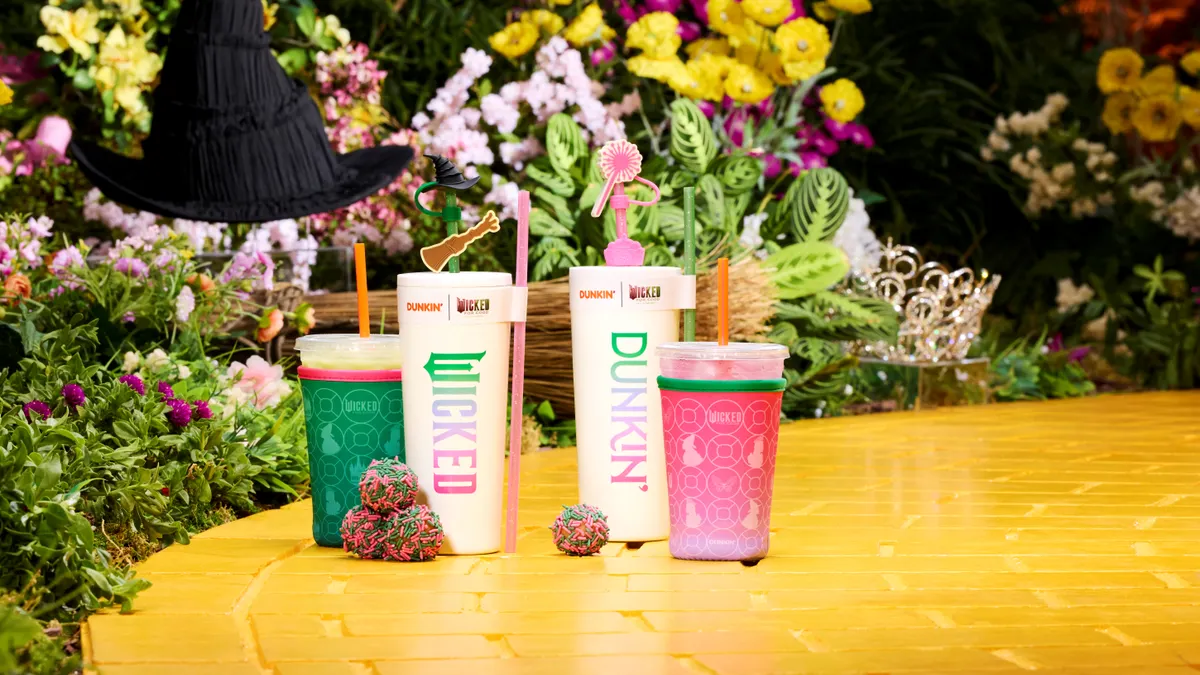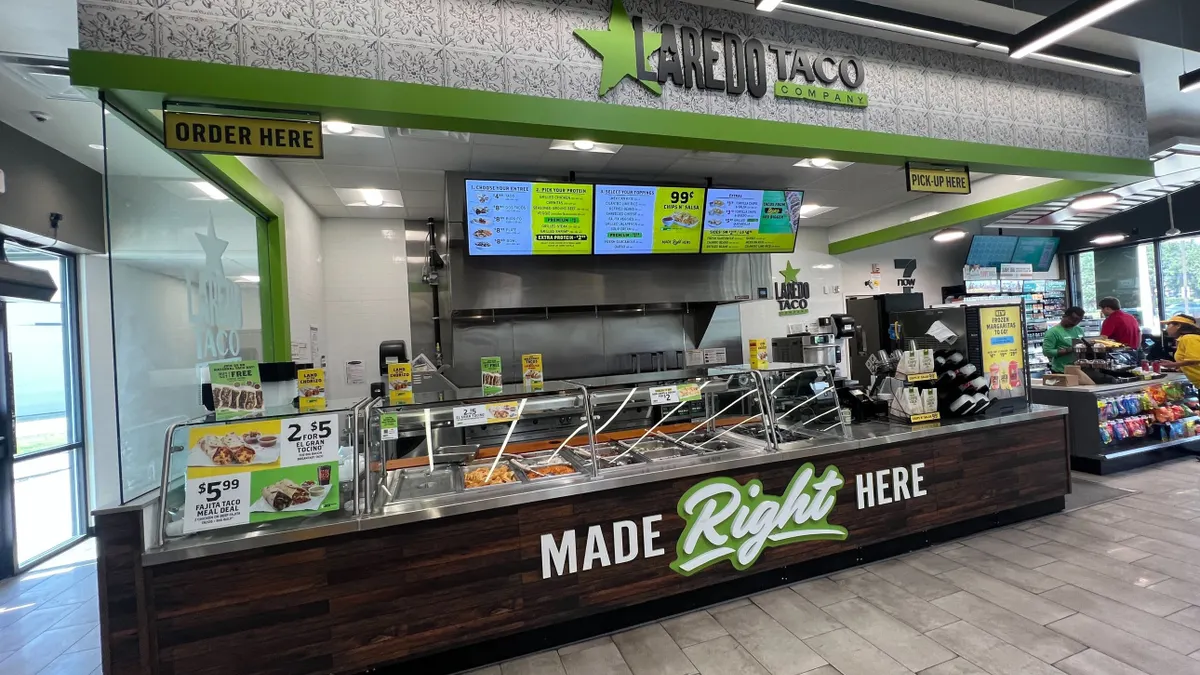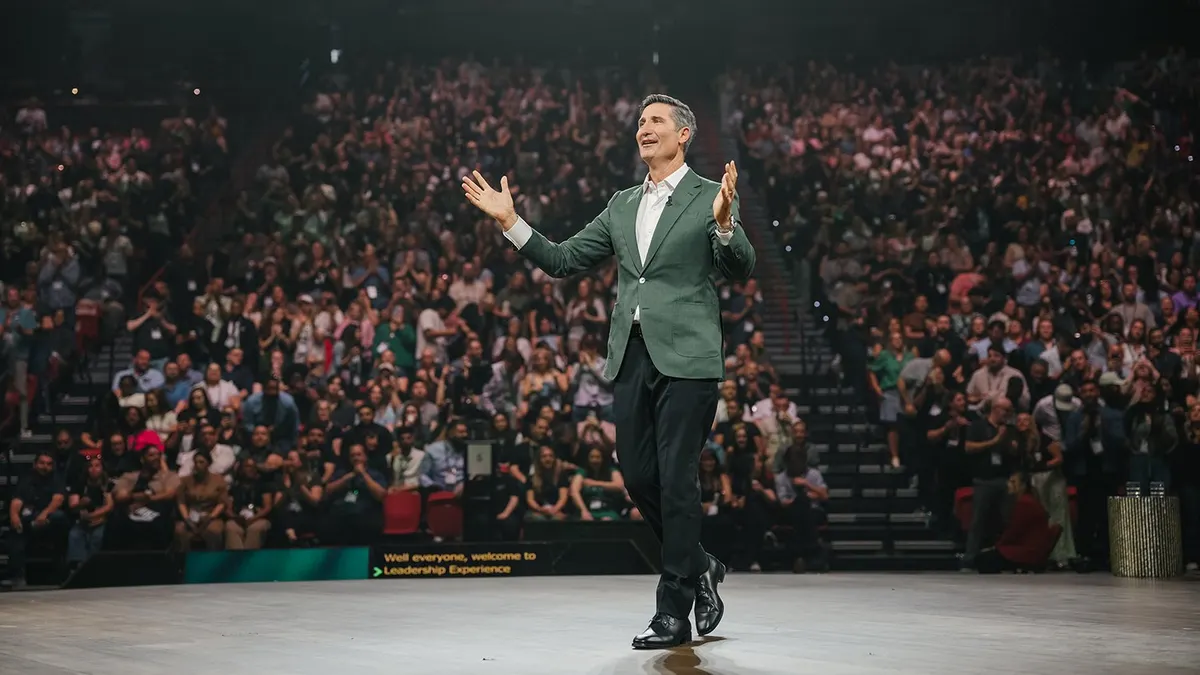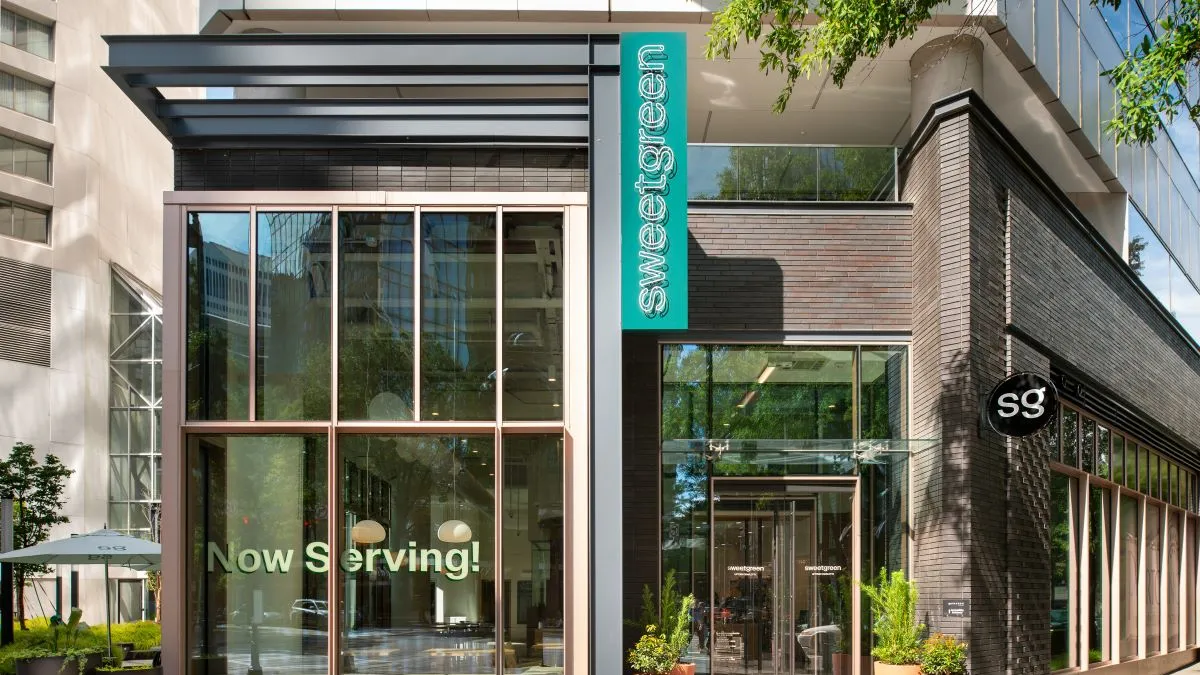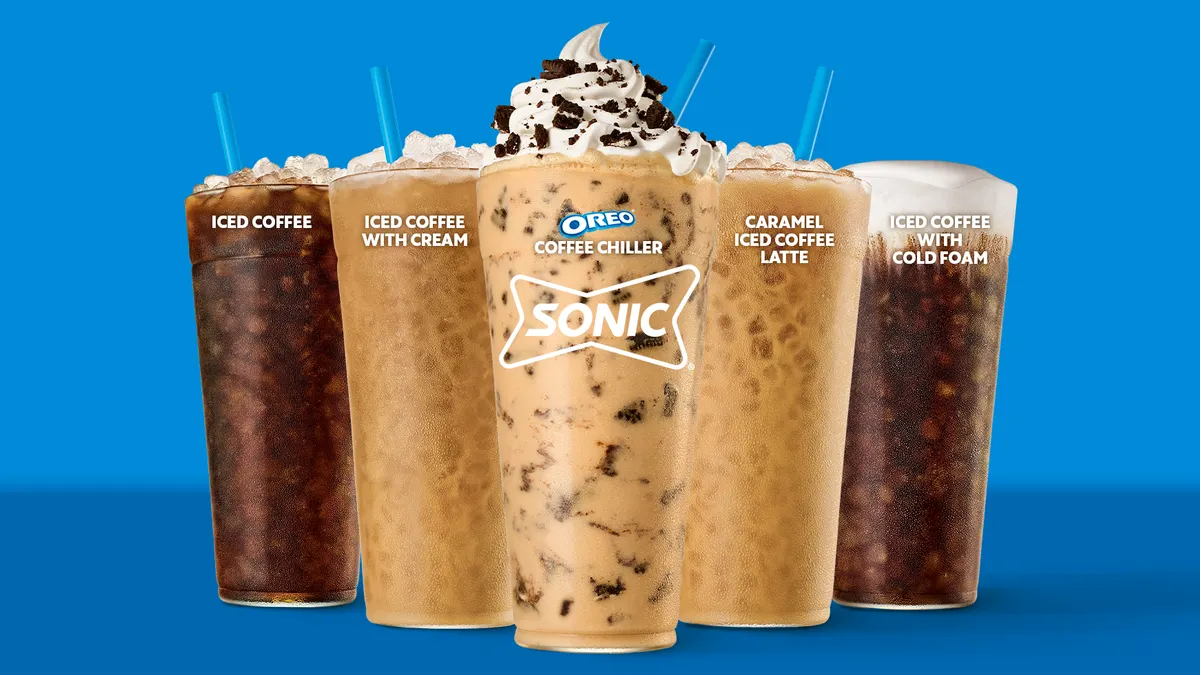A week after the National Restaurant Association Show’s end, the topics that drew considerable interest included loyalty changes, Gen Z consumers and back-of-house labor saving technology.
But there were several moments you may have missed, from immigration as a solution to the industry’s labor problems to operators who are still bullish on ghost kitchens. Restaurant Dive looks back at the things you may have missed in Chicago.

Danny Meyer and the NRA want immigration reform
The shortage of restaurant workers was still at the forefront of conversations at the show, with robot fry cooks, smart combi ovens and other automated or labor-saving solutions nabbing Kitchen Innovation Awards. But the solution to the industry’s staffing problems may also include more workers.
Danny Meyer, founder and executive chairman of Union Square Hospitality Group, said stringent immigration policies are constraining the industry’s ability to find workers.
“We've got big problems, we need more people,” Meyer said during the show’s keynote presentation. “There's a big crisis, with just an enormous number of many, many thousands of migrants who are in our city, and they're only guilty, really, of wanting to be great citizens of this great country as far as I'm concerned. And they're not allowed to work.”
Meyer suggested the industry should put pressure on federal, state and local authorities to make it easier for undocumented immigrants to work, and said the industry should invest in hospitality job-training programs.
Michelle Korsmo, NRA CEO, said the association wanted to make it easier for restaurants to hire immigrant workers.
“The association has spent a lot of time on Capitol Hill talking about the importance of getting more visas for all of these individuals,” Korsmo said. “It's about putting that pressure on elected officials that they have to make these changes.”

Automation may be coming for managers, too
While robotic fry cooks represent the most visible effort to automate restaurant jobs, managers aren’t safe from artificial intelligence or automation, either. Some tasks, like checking payroll or tipping out or ensuring compliance with local labor law when scheduling workers, can be automated, Emma Blecker, chief of staff and director of business systems at Boqueria Kitchen, said during an education session at the conference.
Blecker’s group switched from a manual system for tipping out and doing payroll to using SpotOn’s Teamwork software to automate the company’s payroll system. Boqueria has about eight locations in New York City, Boston, Chicago and Washington, D.C., and Blecker said the changes to these systems added up fast — saving about 3,000 labor hours, or the equivalent of about 1.5 full-time managers.
“The time savings, and the value given back into the business, was over $100,000 just on the time savings of payroll and tipping,” Blecker said. “We are going to see the benefits of that in scaling the business and focusing on initiatives that really help drive the guest experience more than accuracy of payroll.”
Amy Zhou, director of operations at COTE Korean Steakhouse’s parent company, Gracious Hospitality, said SpotOn catches more errors than previous systems, making payroll more accurate. Zhou said software that automates payroll and scheduling in compliance with local labor law also poses savings beyond the hours it spares managers.
“What are the margins in our business? Ten cents on the dollar? One lawsuit is all it takes to wipe you out,” Zhou said. “The more automated it is for our managers, the more time they can spend focused on the guest experience, and building the team, as opposed to in our basement office worrying about cross referencing [to ensure labor law compliance].”
Given the high legal stakes of compliance and the tedious nature of some managerial tasks, many restaurant managers face the prospect of an increasingly automated future alongside the hourly employees who risk displacement by smart ovens and fryers.
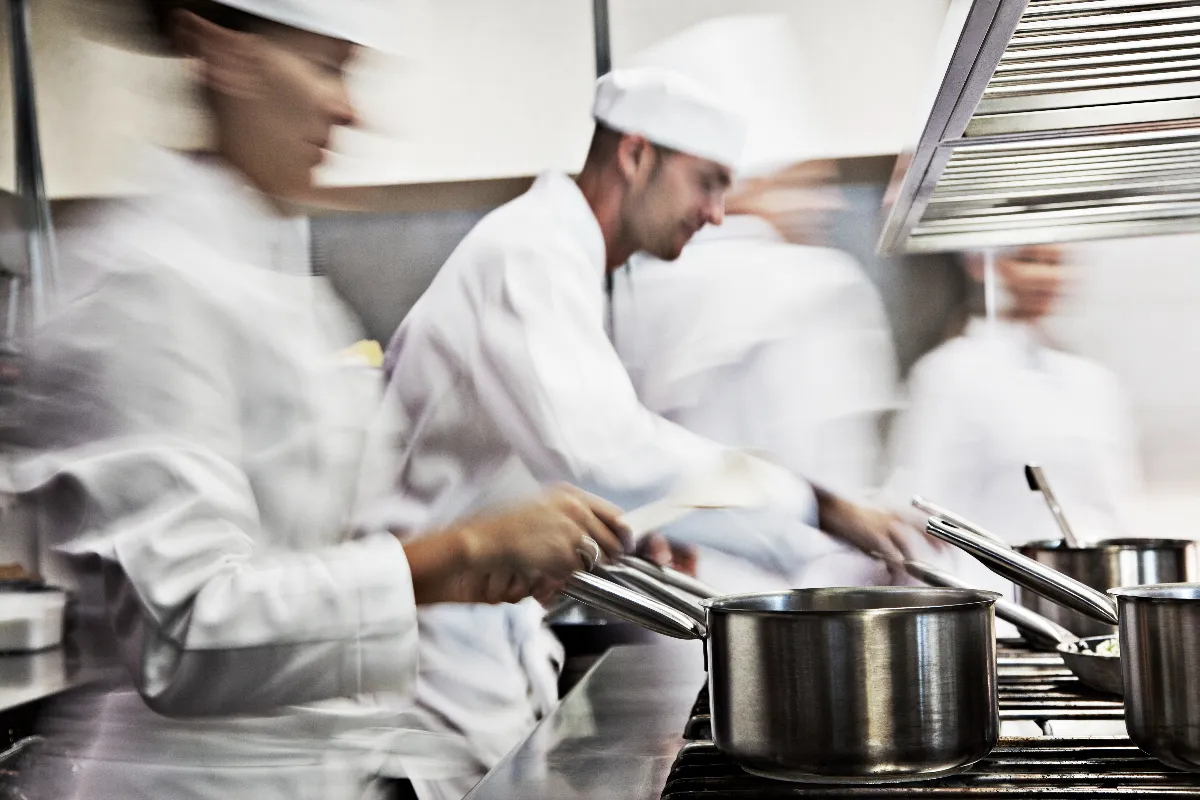
Ghost kitchens still inspire confidence from some operators
News of Nextbite’s latest layoffs, which broke just days before the NRA Show, and Wendy’s closure of its remaining U.S. Reef Kitchens hasn’t snuffed out the optimism some in the industry feel for ghost kitchens and virtual brands.
Pinky Cole, founder and owner of Slutty Vegan, said at the show’s keynote session that she expected ghost kitchens to continue growing.
“I think the restaurant industry is going to be fully digital. I think everybody's going to have ghost kitchens, and more people are going to move away from brick and mortar so that they can test more concepts digitally,” Cole said in response to a question about the industry’s landscape in 2030. She said there was a sizable market for ghost kitchens and that they would likely replace some concepts.
Wow Bao CEO Geoff Alexander said he was likewise bullish on the future of ghost kitchens and virtual brands. Wow Bao operates as a virtual brand out of about 700 kitchens.
“What we've done is we've created a revenue stream for operators to keep the lights turned on,” Alexander said. “I for one fully believed that delivery is not going anywhere.”
Alexander said ghost kitchens and virtual brands that find ways to drive sales while having distinctive products will do well.
“It's not another wing concept or another burger concept. We have a recognized brand, doing a cuisine that's not easy to replicate,” Alexander said.
Wow Bao is still working with Reef, operating out of about 40 locations, and Alexander is satisfied with their partnerships.
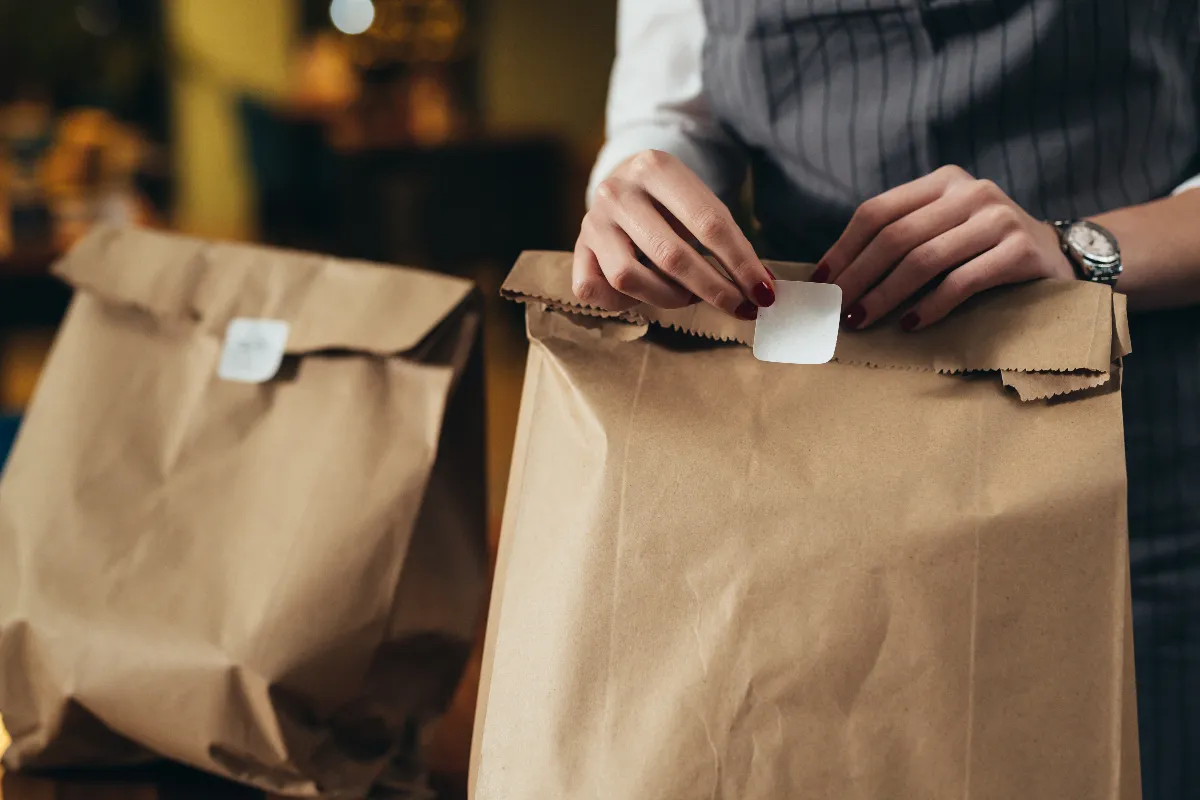
Catering may have a bright future
Catering is another channel that offers operators a chance to make additional revenue. Jim Rand, founder of CaterStrat, said at an education session that catering has a chance to make a serious comeback in a post-pandemic landscape. Rand led Panera’s catering efforts as VP from 2007 to 2016, according to his LinkedIn profile.
Rand said business-to-business catering reached 2019 sales levels, or about $30 billion annually, by the end of 2022. The channel is poised for further growth, he said, supplemented by consumer catering and events catering. Rand estimated that leaders like Panera and Olive Garden only see about $750 million in annual catering sales, meaning there’s space for smaller brands or operators to develop catering and take market share.
But, Rand said, the keys to capitalizing on this are good performance and good marketing.
“I can't tell you how many restaurants deliver their foods without any type of marketing that would allow people to know that it was their brand and what it represents,” Rand said. But branded packaging isn’t enough — businesses need to have an employee or team dedicated to catering, he argued. Rand said this was especially important in B2B catering, where minor mistakes can lead to a loss of future sales.
“That corporate office admin who's responsible for placing the order will not give you more than two chances,” Rand said. “If you deliver all the food correctly, but the boss wanted a special sandwich, and the boss's sandwich was wrong, that corporate office admin is in a really bad place.”
But, by focusing on accuracy, speed, consistency and connecting the catering program to an easy, catering-specific ordering platform, Rand said, operators can take advantage of the lunch hour to find additional sources of revenue.









